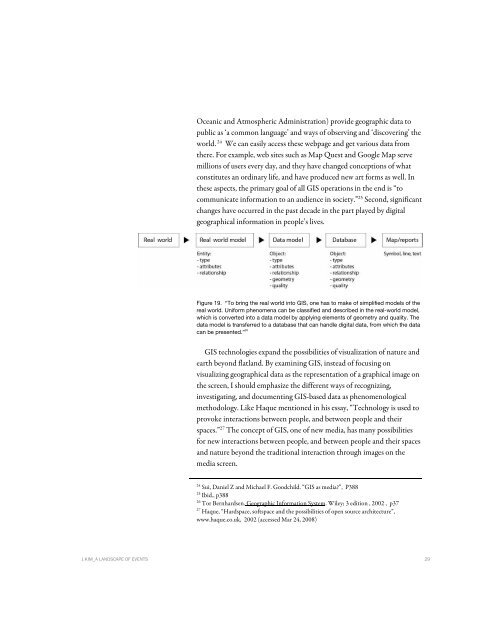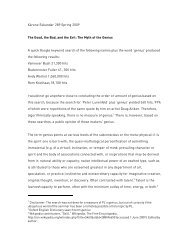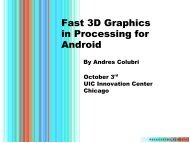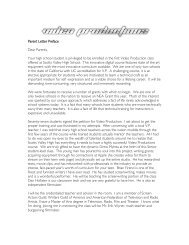UNIVERSITY OF CALIFORNIA Los Angeles - Users - UCLA
UNIVERSITY OF CALIFORNIA Los Angeles - Users - UCLA
UNIVERSITY OF CALIFORNIA Los Angeles - Users - UCLA
You also want an ePaper? Increase the reach of your titles
YUMPU automatically turns print PDFs into web optimized ePapers that Google loves.
Oceanic and Atmospheric Administration) provide geographic data to<br />
public as ‘a common language’ and ways of observing and ‘discovering’ the<br />
world. 24 We can easily access these webpage and get various data from<br />
there. For example, web sites such as Map Quest and Google Map serve<br />
millions of users every day, and they have changed conceptions of what<br />
constitutes an ordinary life, and have produced new art forms as well. In<br />
these aspects, the primary goal of all GIS operations in the end is “to<br />
communicate information to an audience in society.” 25 Second, significant<br />
changes have occurred in the past decade in the part played by digital<br />
geographical information in people’s lives.<br />
Figure 19. “To bring the real world into GIS, one has to make of simplified models of the<br />
real world. Uniform phenomena can be classified and described in the real-world model,<br />
which is converted into a data model by applying elements of geometry and quality. The<br />
data model is transferred to a database that can handle digital data, from which the data<br />
can be presented.” 26<br />
GIS technologies expand the possibilities of visualization of nature and<br />
earth beyond flatland. By examining GIS, instead of focusing on<br />
visualizing geographical data as the representation of a graphical image on<br />
the screen, I should emphasize the different ways of recognizing,<br />
investigating, and documenting GIS-based data as phenomenological<br />
methodology. Like Haque mentioned in his essay, “Technology is used to<br />
provoke interactions between people, and between people and their<br />
spaces.” 27 The concept of GIS, one of new media, has many possibilities<br />
for new interactions between people, and between people and their spaces<br />
and nature beyond the traditional interaction through images on the<br />
media screen.<br />
24<br />
Sui, Daniel Z and Michael F. Goodchild. “GIS as media”, P388<br />
25<br />
Ibid., p388<br />
26<br />
Tor Bernhardsen. Geographic Information System. Wiley; 3 edition , 2002 , p37<br />
27<br />
Haque, “Hardspace, softspace and the possibilities of open source architecture”,<br />
www.haque.co.uk, 2002 (accessed Mar 24, 2008)<br />
J.KIM_A LANDSCAPE <strong>OF</strong> EVENTS 29













